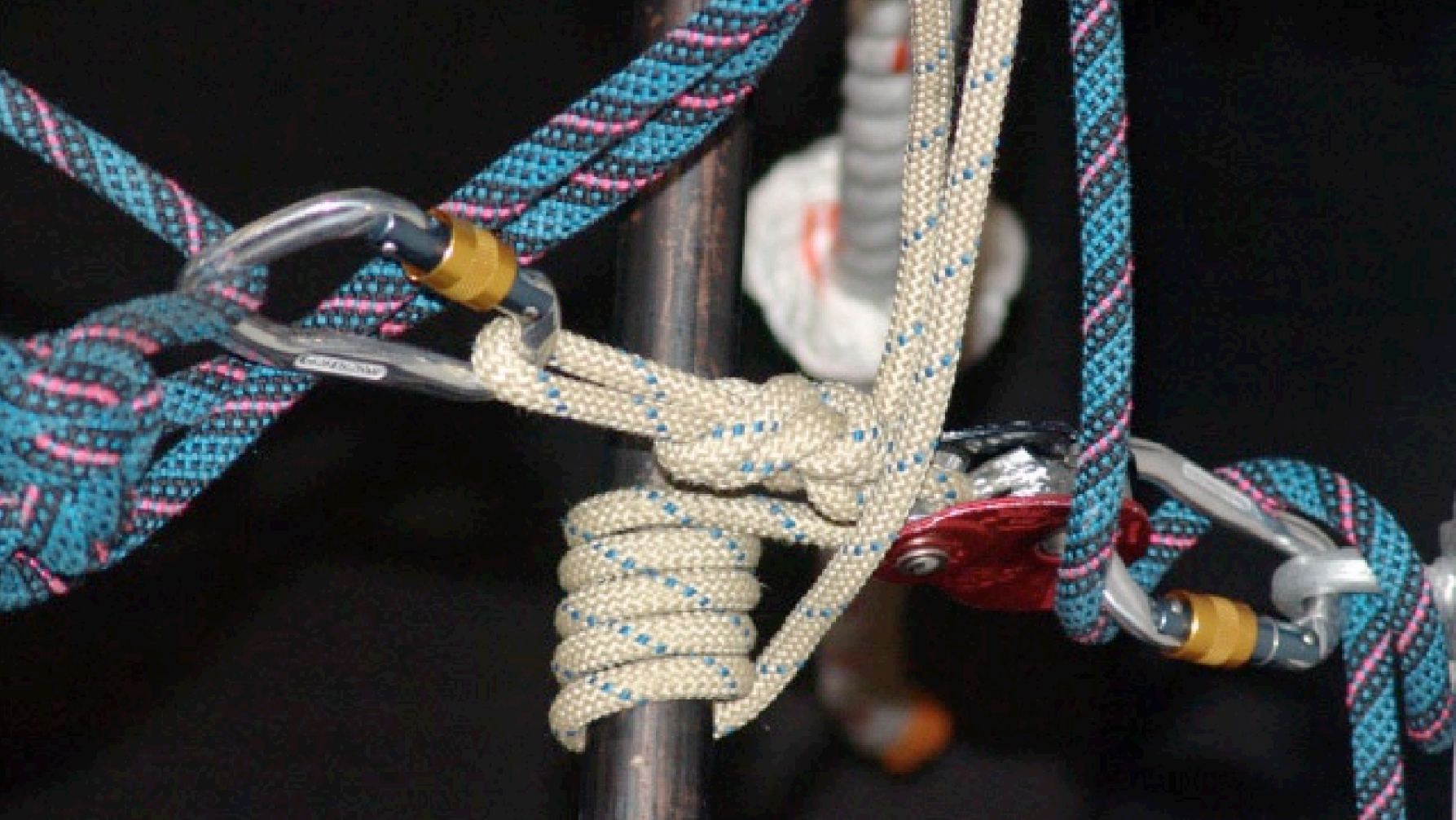By Greg Glassman
This article, by BSI’s co-founder, was originally published in The CrossFit Journal. While Greg Glassman no longer owns CrossFit Inc., his writings and ideas revolutionized the world of fitness, and are reproduced here.
Coach Glassman named his training methodology ‘CrossFit,’ which became a trademarked term owned by CrossFit Inc. In order to preserve his writings in their original form, references to ‘CrossFit’ remain in this article.
Download a pdf of the original article HERE.
Paleoanthropologists tell us that our ancestors left the trees for the ground millions of years ago. Competing hypotheses attribute this shift from a predominantly arboreal to terrestrial locomotion on postural-feeding, social- behavioral, or thermoregulatory pressures. In any case there is a strong consensus among scientists that our heritage is deeply rooted in both climbing and bipedalism, i.e., both swinging from the trees and functioning on two feet.
While nearly all of our regular movements today are bipedal, the value to survival, fitness, and combat of climbing skills is critical and largely undeveloped even in “elite” athletes. In this issue of CrossFit Journal we are offering some tools and techniques to remedy this imbalance of functional domains.
In the broadest and most useful sense, the functional distinction between arboreal and terrestrial skills is that arboreal skills are rich in pulling movements whereas the bipedal movements mostly comprise hip extension and pushing movements. As a consequence of this distinction and the dearth of climbing skills drawn upon in fitness programs, the pulling capacity of modern athletes is woefully deficient. Compare briefly the number of pushing to pulling movements available in the course of our normal training. Push-ups, dips, handstand push-ups, bench press, shoulder press, and jerks versus, what, pull-ups and maybe rope climb?
In discussing the dearth of pulling movements in physical training many have offered for consideration the “pulling” components of the clean and jerk and snatch lifts. It is our contention, though, that these movements have much more in common functionally, and anatomically, with pushing movements than the pulling required of rope climb or pull- ups.The “pulling” of cleaning and snatching moves the upper arm away from the body and emanates from the trapezius and anterior and middle deltoids rather than moving the arms closer to the body with the lats, posterior deltoid, and biceps as required of the pull-up or rope climb.
Even the bodybuilding repertoire, which includes seated cable rows, bent-over rows, one-armed rows, and curls, includes more pulling movements than more functional and developmental weight training like weightlifting and powerlifting, but the motivation and value behind these moves is somewhat more anatomical or cosmetic than functional.
We believe that the semi-pull of the Olympic lifts coupled with regular pull-ups offers a superior pulling regimen than bodybuilding yet still is pulling deficient. We’re going to fix that deficiency.
The CrossFit regimen has long included rings, pull-up bars, and rope climb, but this month we introduce two new tools to our community: the cargo net and the Bachar ladder. With these new tools we have been able to build a climbing network that offers endless combinations of movements and pulling types that are extremely challenging and wonderfully developmental.
The addition of the Bachar ladder and cargo net when combined with the climbing rope add to the development of what is for us a sub-domain of gymnastics that we’re calling “macroclimbing.” Our focus and aim in macroclimbing is to work less technical and nuanced climbing than associated with “bouldering” or sport climbing.
As we see it, the immediate advantages to macroclimbing are that it focuses on larger muscle groups, places less demanding stress on delicate tendons and ligaments of the hands and fingers, requires less technical skill, and has more immediate and functional application to survival, combat, and fitness. Our community is as likely to find the need to scale fences, trees, balconies, and rooftops as rock.
There are two other aspects to macroclimbing that will hold particular interest to the CrossFit community. First, the applications to grappling arts of large muscle pulling movements are immense. Secondly, increasing the repertoire of climbing components has somewhat reshuffled the deck in terms of ranking the prowess of our athletes. This reshuffling, or reranking, of our athletes is in part due to the shift towards the “little guy” in the “big guy/little guy” wars, but more importantly fear of heights, very low heights in fact, has dethroned several of our indomitable performers – male and female. Several intrepid athletes, again male and female, of the middle ranks have trounced a few superstars, and this has been not only riotously entertaining but also healthy for everyone.

The Bachar ladder was entirely unknown to us until Mark Twight, the legendary alpinist and author of Extreme Alpining and Kiss or Kill, came to visit us late last year. No sooner had Mark described the ladder and explained that it was instrumental in developing great climbing strength when we decided to build a few of these beasts.
The climber John Bachar developed the ladder that bears his name in the mid 1980s. The Bachar ladder is simply a tensioned rope ladder suspended on an incline. It was recommended that the ladder be strung at 45 degrees but we had two convenient beams that we wanted to bridge, so our ladders ended up being more like 60 degrees, but we’ve read recommendations of 20 to 30 degrees from several references.
While the Bachar ladder is credited with developing elite climbing strength it also has the reputation for causing injury. The current consensus among elite climbers is that the ladder is not directly at fault. The injuries associated with the Bachar Ladder are tendonitis of the elbow and separation injuries to the shoulder. Rapid and aggressive descents and immoderate dosages while first learning to use the ladder probably account for most of these injuries. In our early and admittedly limited experience with the Bachar Ladder the consensus among our athletes is that it presents no greater risk of injury than the climbing rope or rings. Climber Neil Gresham’s advice that “used correctly, with control and appropriate rest and set structure, Bachar ladders can provide a safe, fun and highly effective means of developing upper body strength and power for climbing” resonates well with our experience and intuition.
John Bachar once offered a commercial ladder, but alas, these are no longer available. Pacific Fibre and Rope Co. offers rope ladders with wooden dowels available in custom lengths, widths, and rope types (manila or Poly Dacron) and diameters. We, however, opted, in large part because of Mark Twight’s generous assistance, to make our Bachar ladders from scratch.
We need to admit right off that we are disinclined by time and temperament to fabrication of nearly any kind. But, this project was a lot of fun and the end product came out not just good but great! Each ladder is constructed from 1” schedule 40 PVC pipe, used climbing rope, and locking (self-jamming) pulleys, carabiners, and in our case, eyebolts, washers, and nuts for attachment to our glue-laminate beams.
We bought a mitre-saw for cutting the PVC pipe and a drill press for drilling the holes. One of our adventurous friends cut his pipe and drilled his holes by hand and the resulting product was certainly useable. We picked up the power tools out of a combination of laziness, a desire for precision, uncertain skills, and in anticipation of additional and regular fabrications down the road.
We started with the knowledge that we wanted to span the two major beams from which our pull-up bars, ropes, and rings are attached. One of these beams is 8 feet high and the other is 15 feet. From center to center the beams are separated by 11 feet, which would become the overall length of each of our two ladders. It was recommended that we place our rungs 12 inches apart so we used 9 rungs for each ladder, leaving a foot of working room above and below each rung.
Each ladder is constructed from a single strand of rope. We used 11 mm climbing rope, and each ladder was built from a 30-foot length.
We made 9 rungs for each ladder for a total of 18 rungs. We made each PVC rung 9 inches long and drilled a half-inch diameter hole through both ends with the hole’s center 5/8 inch from the end. Sand the rungs with medium grit sandpaper only enough to roughen the surface. This will help them accept chalk. Don’t sand over the holes.

Start with a length of rope 2.5 times the desired overall ladder length, find the middle and tie a figure eight knot from that point. The middle of this strand will sit above the top rung of the ladder. The loop formed by the figure eight knot at the top allows for adjusting the height of the top rung of the ladder. The figure eight knot is the only knot used in making the ladder and has the advantage of being a solid “stopper” while still being relatively easy to untie after having been tightened. The carabiner will not go in the loop but sits “below” it.
Next, feed the free ends opposite the top loop through the holes in what is to become the top rung. When the rung is roughly in position relative to the desired top, chase a figure eight knot up the free end until it comes to rest below the rung. Without tightening the figure eight knots, thread each rung followed by a pair of figure eight knots, leaving roughly 12 inches space between rungs. The figure eight knot is important; an overhand knot will work as well at stopping the rung but may be impossible to untie after the ladder has been loaded or tensioned.
Then with the ladder laid out with the top secured to a fairly immovable object make the adjustments from top to bottom securing each rung against a pair of finessed and tightened figure eight knots before measuring and proceeding to the next rung. This is a fairly laborious process as each knot needs to be secured at about 10.5 inches and the rung pulled on to settle the knot and rung at the 12 inch mark. As many knots as not will settle at above or below 12 inches and need to be redone if you want precise spacing and parallel rungs. (We’re not sure this is important, however.)
Tie another figure eight knot from the free ends at the bottom of the ladder and the ladder is completed.
The top of the ladder can be secured to an eyebolt with the carabiner “below” the top loop. A carabiner attached “above” the bottom loop will attach to another loop tied from an additional single strand of rope. This single strand passes through a locking pulley that is used to adjust tension in the ladder. We attached the locking pulley to another carabiner fed through an eyebolt attached to the bottom beam.
If you don’t have a wooden beam through which you can conveniently pass an eyebolt and hardware you’ll want to attach the carabiners at both ends to some immovable object with 1” nylon tubular webbing. You can safely and securely tie nylon tubular webbing around any immovable object but it is imperative that you use a water knot to do so.
Tensioning of your ladder is simply a matter of pulling with several people on the free end of the single strand of rope passed through the locking pulley. The ladder will need to be re-tensioned several times until the stretch is out of the rope.
Using the ladder is rather simple. Returning again to Neil Gresham: “The basic exercise is to climb the ladder using alternate rungs, preferably footless or with one foot for assistance if required. This simulates the biomechanical pattern of climbing far more effectively than a basic pull-up, primarily because the arms are at different heights. This creates a continuous coordinative switch between pulling (with the leading arm) and pushing (with the trailing arm), as well as a further switch between dynamic strength (when pulling up) and isometric strength (when locking off and reaching up). In addition, if climbed at speed using the deadpointing technique to move between the rungs, Bachar ladders can be equally effective for developing explosive upper body power and reaction timing.”
With regular exposure to measured doses our crew is going up the ladder backwards, forwards, with and without legs. We mat the drop zone with gymnastics landing mats and double up under the daring, gifted, or terrified. We coach our crew to keep their shoulders active – away from the ear and under tension – and practice brachiating – swinging with relatively straight arms, like monkeys. On average, the Bachar ladder is a huge hit with our crew. The ladders are going to serve as a powerful incentive to good nutrition; the fat boys are less than thrilled.
Don’t let a lack of workout space or ceiling height keep you from making a ladder. You could perform miracles with a ladder that rose 5 feet across 9 feet. This is perfect garage gym stuff. The rise is 30 degrees and when worked backwards, forwards, with and without feet, in an “L”, and for time the stimulus is strong.
Another CrossFit addition to our arboreal network is a cargo net. Our net is made from one-foot squares of 1 inch Dacron sheathed polypropylene, or Poly Dacron, and measures 15 feet by 7 feet. We’ve hung it to eyebolts lengthwise across our 15-foot high beam like a curtain. With Kevlar climbing slings we can adjust the length of the curtain to the intended protocol. Currently it sits gathered with a three square (foot) long curtain dangling across nearly fifteen feet, 12 feet above the floor. Climbing the full net with legs and arms is really easy. Nearly anyone ambulatory could climb it, but traversing the dangling curtain of net by arm is surprisingly tough. The net has the most amazing and wonderful property that the target point of every reach dramatically runs uphill as the trailing arm releases and swings forward. In a lateral traverse the athlete will rise and fall repeatedly before reaching the other side. Every step is surprisingly tough.
Climbing the hanging edge of the cargo net without feet, because it offers a moving target, is a lot harder than climbing the Bachar ladder.
We bought our cargo net from Pacific Fibre and Rope Company. They’ve been included in our dreams for a long time. They supply to a lot of retailers of gymnastics equipment and offer an array of cargo nets, rope ladders, gangway nets, Burma bridges, and climbing ropes.
During the past year our only climbing rope, a 1-1⁄2 inch manila, started shedding like a mangy monkey. Initially we were disinterested in synthetic ropes but after seeing a broken-in Poly Dacron rope at Santa Cruz Gymnastics and talking repeatedly with Ron Goldman at Pacific Fibre we had not only a Poly Dacron cargo net but six Poly Dacron climbing ropes (four regular and two knotted) outfitted with hardware and shipped out to us. The Poly Dacron ropes should maintain their integrity and improve their hand with use and chalk over decades.
We’ve hung three of the new ropes, the cargo net, and both Bachar ladders in a network that also includes our main pull-up bar, rings, and spotting harness. The routing possibilities are endless and the climbing types are widely varied. We’ve already become enamored with competitive routes that involve ladder climbing followed by a rope descent (both ladder and rope legless) with a brief stop on terra firma for kettlebell snatches (tough), thrusters (tougher), or hang squat cleans (toughest), and back up the ladder. Five rounds for time are devastating.
Requiring the ladder climbers to traverse the cargo net at ladder’s top and cross each other on the net to descend on the opposite rope is fun to watch through your fingers. Allowing competitors physical contact on the traverse is in the cards.
We’ll not go into the ideas for games that have been tabled and shelved since installing the climbing network.
More than a few ideas involve throwing medicine balls at climbers. We’ve now also the possibility of entire workouts ex terra where matting, and spotting and falling techniques are important and need to be researched, learned, discussed, and practiced by coaches and athletes. Between the martial art, gymnastics, and even cheerleading communities you can find numerous rich sources for falling and spotting techniques on the Internet. This bit of handiwork with knots, carabiners, ropes, nets, pulleys, and PVC, was instructive and opens the door for many to an entire world of survival related skills, and the physical advantage to developing a strong capacity in the arboreal, or ex terra, environment is an important advancement in the CrossFit protocol.
References
Special Thanks to Mark Twight, Training Director, Mountain Mobility Group, LLC, info@mountainmobilitygroup.com, for everything we did right and apologies for the parts we may have goofed on.
http://www.grivelnorthamerica.com Grivel North America. Climbing stuff.
http://store.karstsports.com/petp07mintra.html Petzl self-jamming (self-locking) pulley. This is the pulley we used.
www.pacificfibre.com Pacific Rope and Fibre is extremely helpful (ask for Ron Goldman) and they can make anything you need.
http://www.jqjacobs.net/anthro/paleo/bipedalism.html The origins of bipedalism
http://geert.com/HumEvGrip.htm The lust for grip pressure
http://brmrg.med.virginia.edu/knots/water.html Water knot
http://brmrg.med.virginia.edu/knots/fig8.html Figure eight knot
http://www.planetfear.com/article_detail.asp?a_id=187 Deadpointing and other techniques.
http://www.judoinfo.com/ukemi.htm Falling techniques from Judo
http://www.norberts.net/gymnastics.htm Norbert’s is our favorite supplier of mats, spotting belts and a lot of other equipment.
http://www.varsity.com/index.asp?article=15 This cheerleading catch needs to be learned by coaches and taught to special teams and better athletes.
More than a few ideas involve throwing medicine balls at climbers.
We’ve now also the possibility of entire workouts ex terra where matting, and spotting and falling techniques are important and need to be researched, learned, discussed, and practiced by coaches and athletes. Between the martial art, gymnastics, and even cheerleading communities you can find numerous rich sources for falling and spotting techniques on the Internet.
This bit of handiwork with knots, carabiners, ropes, nets, pulleys, and PVC, was instructive and opens the door for many to an entire world of survival-related skills, and the physical advantage to developing a strong capacity in the arboreal, or ex terra, environment is an important advancement in the CrossFit protocol.
- Download Original PDF
- Download Español (Spanish) PDF
- Download Português (Portuguese) PDF
- Download Italiano (Italian) PDF
- Download Français (French) PDF
Greg Glassman founded CrossFit, a fitness revolution. Under Glassman’s leadership there were around 4 million CrossFitters, 300,000 CrossFit coaches and 15,000 physical locations, known as affiliates, where his prescribed methodology: constantly varied functional movements executed at high intensity, were practiced daily. CrossFit became known as the solution to the world’s greatest problem, chronic illness.
In 2002, he became the first person in exercise physiology to apply a scientific definition to the word fitness. As the son of an aerospace engineer, Glassman learned the principles of science at a young age. Through observations, experimentation, testing, and retesting, Glassman created a program that brought unprecedented results to his clients. He shared his methodology with the world through The CrossFit Journal and in-person seminars. Harvard Business School proclaimed that CrossFit was the world’s fastest growing business.
The business, which challenged conventional business models and financially upset the health and wellness industry, brought plenty of negative attention to Glassman and CrossFit. The company’s low carbohydrate nutrition prescription threatened the sugar industry and led to a series of lawsuits after a peer-reviewed journal falsified data claiming Glassman’s methodology caused injuries. A federal judge called it the biggest case of scientific misconduct and fraud she’d seen in all her years on the bench. After this experience Glassman developed a deep interest in the corruption of modern science for private interests. He launched CrossFit Health which mobilized 20,000 doctors who knew from their experiences with CrossFit that Glassman’s methodology prevented and cured chronic diseases. Glassman networked the doctors, exposed them to researchers in a variety of fields and encouraged them to work together and further support efforts to expose the problems in medicine and work together on preventative measures.
In 2020, Greg sold CrossFit and focused his attention on the broader issues in modern science. He’d learned from his experience in fitness that areas of study without definitions, without ways of measuring and replicating results are ripe for corruption and manipulation.
The Broken Science Initiative, aims to expose and equip anyone interested with the tools to protect themself from the ills of modern medicine and broken science at-large.
Support the Broken Science Initiative.
Subscribe today →
recent posts
Journal Club, September 25, 2025
Emily Kaplan challenged a room full of pharma executives and physicians with a radical message: MetFix affiliates around the world are reversing chronic disease not with new drugs, but by teaching people how their bodies actually work.



















